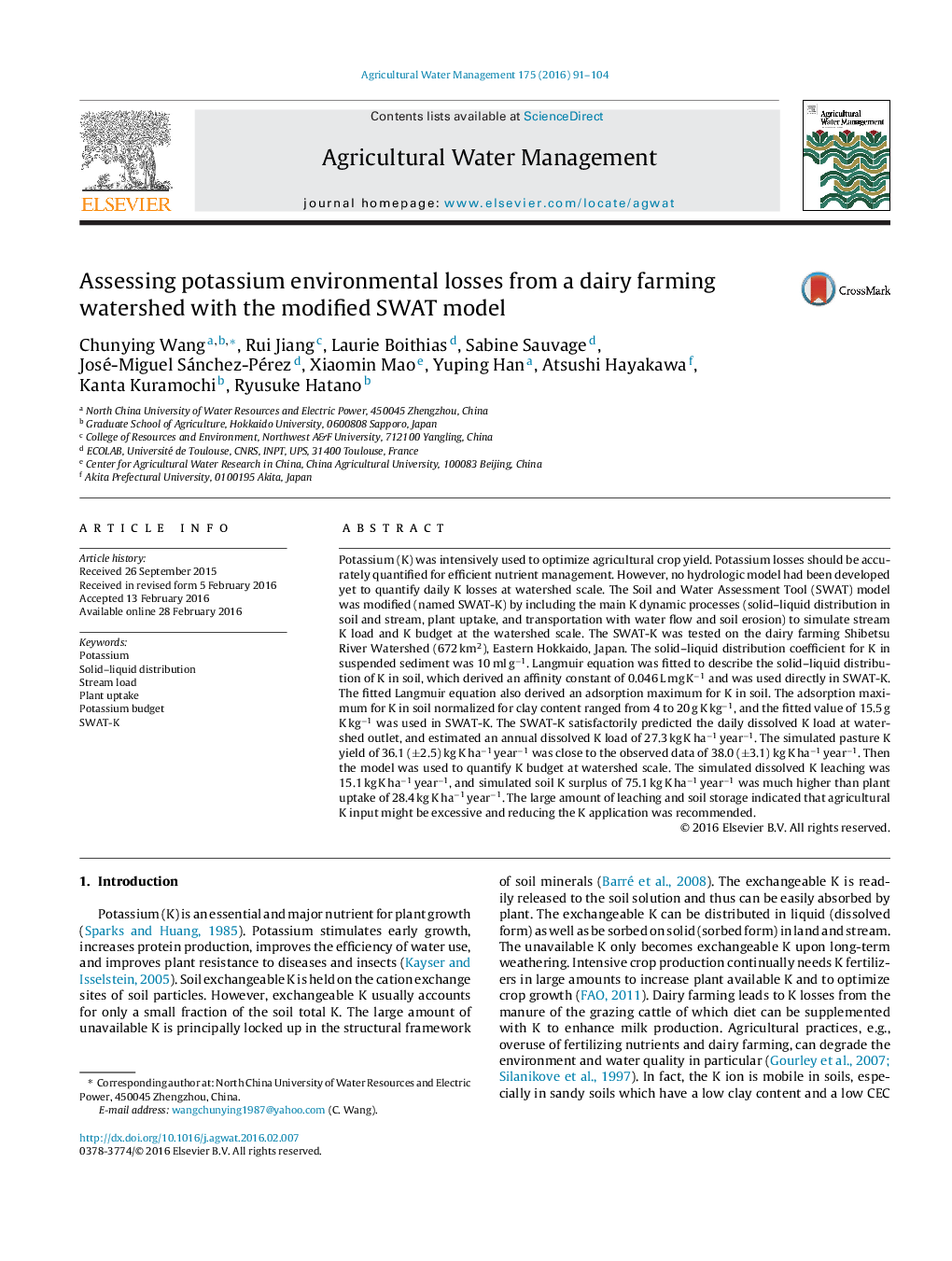| کد مقاله | کد نشریه | سال انتشار | مقاله انگلیسی | نسخه تمام متن |
|---|---|---|---|---|
| 4478269 | 1622905 | 2016 | 14 صفحه PDF | دانلود رایگان |

• The SWAT model was upgraded with a new potassium (K) module.
• Model outputs were compared to observed stream dissolved K load and plant K yield.
• The validated modified model allowed quantifying the K budget at watershed scale.
• Soil K surplus was estimated 75 kg ha−1 year−1; plant K uptake was 28 kg ha−1 year−1.
• Adsorption maximum for K normalized for clay content was 4 to 20 g K kg−1
Potassium (K) was intensively used to optimize agricultural crop yield. Potassium losses should be accurately quantified for efficient nutrient management. However, no hydrologic model had been developed yet to quantify daily K losses at watershed scale. The Soil and Water Assessment Tool (SWAT) model was modified (named SWAT-K) by including the main K dynamic processes (solid–liquid distribution in soil and stream, plant uptake, and transportation with water flow and soil erosion) to simulate stream K load and K budget at the watershed scale. The SWAT-K was tested on the dairy farming Shibetsu River Watershed (672 km2), Eastern Hokkaido, Japan. The solid–liquid distribution coefficient for K in suspended sediment was 10 ml g−1. Langmuir equation was fitted to describe the solid–liquid distribution of K in soil, which derived an affinity constant of 0.046 L mg K−1 and was used directly in SWAT-K. The fitted Langmuir equation also derived an adsorption maximum for K in soil. The adsorption maximum for K in soil normalized for clay content ranged from 4 to 20 g K kg−1, and the fitted value of 15.5 g K kg−1 was used in SWAT-K. The SWAT-K satisfactorily predicted the daily dissolved K load at watershed outlet, and estimated an annual dissolved K load of 27.3 kg K ha−1 year−1. The simulated pasture K yield of 36.1 (±2.5) kg K ha−1 year−1 was close to the observed data of 38.0 (±3.1) kg K ha−1 year−1. Then the model was used to quantify K budget at watershed scale. The simulated dissolved K leaching was 15.1 kg K ha−1 year−1, and simulated soil K surplus of 75.1 kg K ha−1 year−1 was much higher than plant uptake of 28.4 kg K ha−1 year−1. The large amount of leaching and soil storage indicated that agricultural K input might be excessive and reducing the K application was recommended.
Journal: Agricultural Water Management - Volume 175, September 2016, Pages 91–104